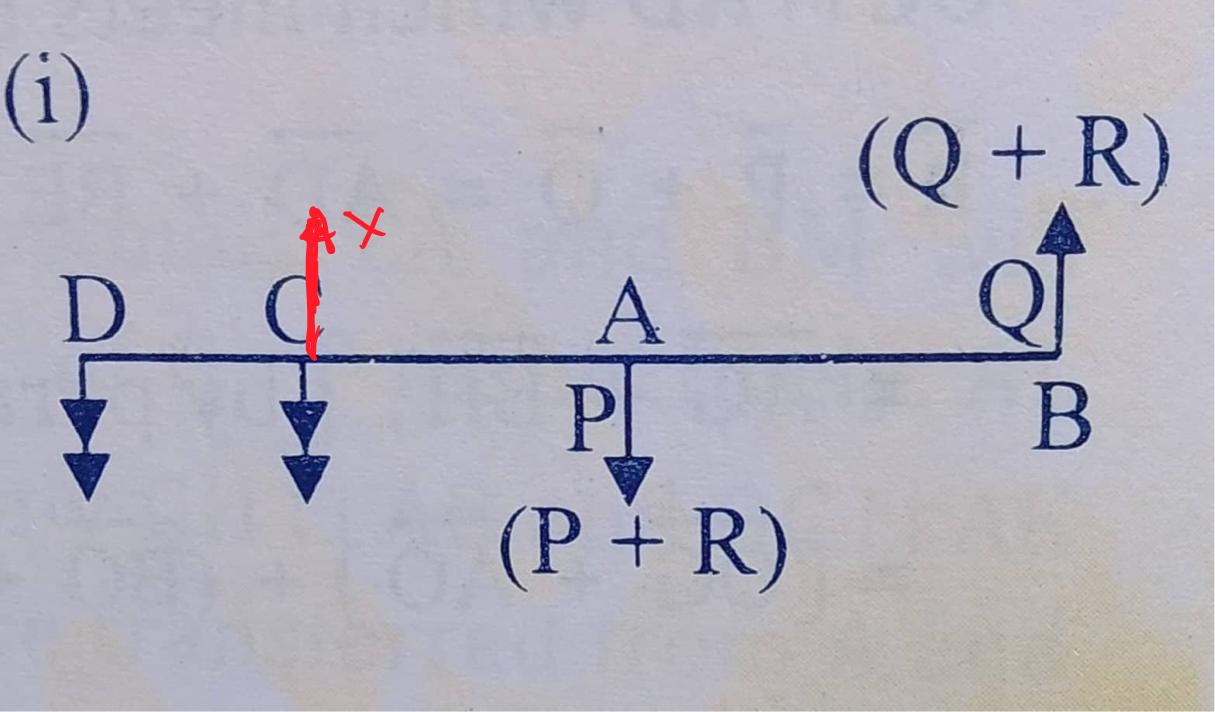Question:
Two unlike parallel forces $P$ and $Q$ $(P>Q)$ act at $A$ and $B$ respectively. If P and Q are both increased by R, show that the resultant will move through a distance $d=\frac{R}{P-Q}$.
My book's attempt:

Let the resultant of two unlike parallel forces $P$ and $Q$ act at $C$.
$$\frac{P}{BC}=\frac{Q}{AC}=\frac{P-Q}{AB}$$
[Each force is proportional to the distance between the points of application of the other two.]
From 2nd and 3rd ratios,
$$AC=\frac{Q}{P-Q}AB\tag{1}$$
Let when $P$ and $Q$ are increased to $P+R$ and $Q+R$, their resultant act at $D$, where $CD=d$.
$$\frac{P+R}{BD}=\frac{Q+R}{AD}=\frac{P+R-Q-R}{AB}$$
[Each force is proportional to the distance between the points of application of the other two.]
From the 2nd and 3rd ratios,
$$AD=\frac{Q+R}{P-Q}AB\tag{2}$$
$(2)-(1)$,
$$AD-AC=\frac{Q+R-Q}{P-Q}AB$$
$$d=\frac{R}{P-Q}AB\ (\text{showed})$$
My comments:
My book assumed that the forces $P$ and $Q$ acting at $A$ and $B$ respectively will have a resultant force $P-Q$ that will act at $C$. I take issue with this. I would've agreed with the book if P and Q were both acting at the same point; then the resultant would've been $P-Q$, which would've acted at the same point as $P$ and $Q$. However, that's not the case here. P and Q are acting at two different points in opposite directions. I think what will happen is that the body that the two forces are acting on will experience a net torque and start rotating.
My question:
- Isn't my book's attempt wrong?

